PLA Navy Aviation: basic patrol and reconnaissance aircraft
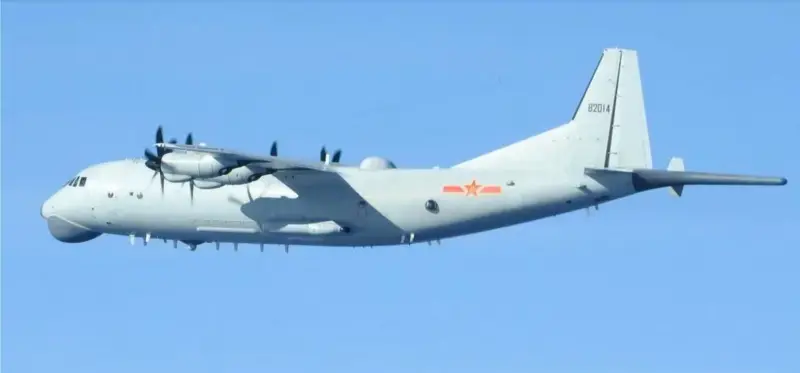
Aviation The PLA Navy has a diverse and in many ways unique aircraft composition. In addition to fighters and bombers, the aircraft are armed with coastal and carrier-based AWACS aircraft, long-range and high-speed reconnaissance aircraft, basic patrol and anti-submarine aircraft, electronic warfare aircraft, seaplanes and medium and heavy class UAVs. Today we will look at Chinese naval patrol, anti-submarine and reconnaissance aircraft.
Reconnaissance, patrol and anti-submarine aircraft of the Chinese fleet based on the military transport Y-8 and Y-9
Chinese naval aviation conducts daily patrol and reconnaissance flights to control the waters adjacent to the Chinese mainland and monitor the disputed islands in the South China Sea. Sometimes PLA Navy aircraft track American ships in the Pacific Ocean at a very considerable distance from the coast. In this case, in-flight refueling and intermediate runways built on artificial islands are used.
In the mid-1980s, the PRC did not have specialized anti-submarine and basic patrol aircraft. For anti-submarine defense and control of coastal waters, Chinese admirals during the Cold War used Be-6 and SH-5 seaplanes, reconnaissance aircraft based on the Tu-4, N-5 (Chinese version of the Il-28), N-6 (a copy of the Tu-16). 8) and Y-12 (copy of An-XNUMX).
However, the flights of these aircraft were of a non-systematic episodic nature, and the radar equipment placed on board had limited capabilities in terms of detection range and noise immunity.
In the first half of the 1980s, after the normalization of relations with the United States, China acquired several American radars suitable for installation on a patrol aircraft created on the basis of the Y-8 military transport.
The AN/APS-504 radar, operating in the frequency range 8,9–9,4 GHz, was previously installed on American anti-submarine aircraft. This station had a circular and sector viewing mode, the antenna rotation speed was 12 rpm. By scanning the space in the lower hemisphere, it was possible to detect large surface targets at a range of 350 km. At that time, the AN/APS-504 was no longer the last word in radar, but its use made it possible to raise the capabilities of Chinese maritime patrol reconnaissance aircraft to a new level.
The AN/APS-504 radar-equipped patrol aircraft is known as the Y-8X. The first aircraft of this type began performing patrol flights in 1986.
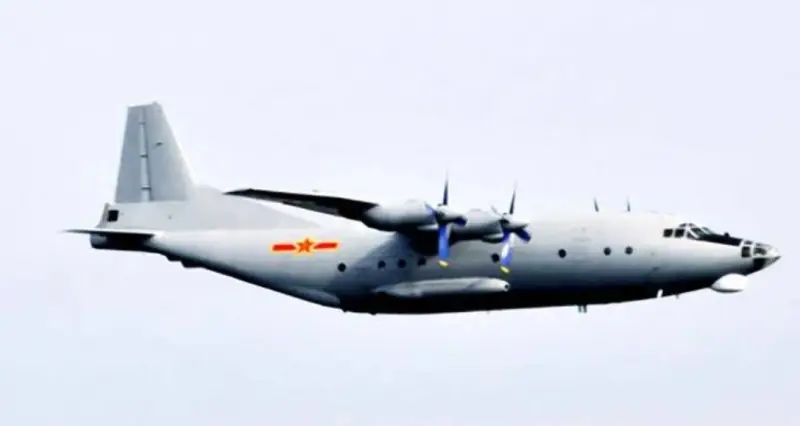
The rear ramp of the converted transport vehicle was tightly sealed, and the interior space was divided into several compartments for operators and electronic equipment.
In addition to the AN/APS-504 radar, on board the Y-8X there were electronic reconnaissance and electronic warfare stations, cameras, infrared sensors, a magnetometer, a sonobuoy signal receiver, advanced communications equipment and an Omega navigation system. A significant part of the complex avionics for the Y-8X was manufactured in Europe and the USA.
After the events in Tiananmen Square, military-technical cooperation with Western countries ceased, and the opportunity to obtain spare parts for imported avionics disappeared. In this regard, at the beginning of the 504st century, the American AN/APS-8 stations, which by that time were quite outdated and worn out, were dismantled from aircraft. Instead of foreign electronics, the Y-XNUMXX aircraft were equipped with Chinese-made equipment.
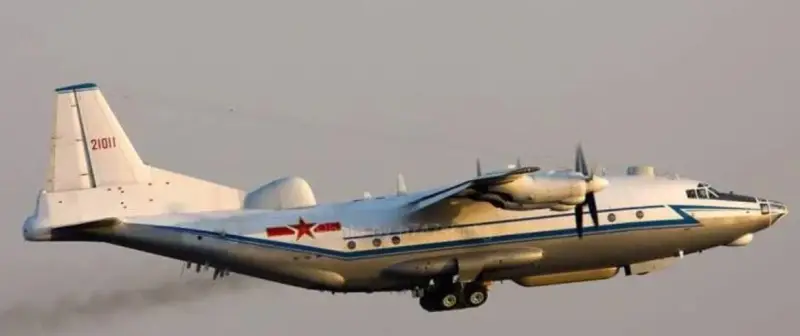
There is a known modification of a modernized patrol aircraft with a side-view radar and a satellite communications antenna located next to the tail. Two more vehicles were converted to conduct electronic and photographic reconnaissance, and one aircraft was equipped with a new all-round sea surface radar.
In addition to the American AN/APS-504 stations, six converted Chinese transport aircraft were equipped with British Skymaster radars, manufactured by Racal Electronics and illegally supplied in circumvention of sanctions.
The radar, which received the Chinese designation Type 515, coupled with a computer complex and information visualization equipment, is capable of monitoring the sea area within a radius of 250 km. At a range of up to 90 km, the radar can detect submarine periscopes. Low-altitude air targets with an ESR of 5 m² are detected at a distance of 110 km. Provides control over 32 surface targets. It is also possible to see aircraft that are at the same altitude or lower.
The patrol aircraft, known as Y-8Js, are easily identified by their distinctive "beard" and antenna radome on the lower nose. To power very energy-intensive equipment and equipment, an additional turbogenerator was installed in the rear section of the aircraft in place of the gunner’s cabin of the rear defensive installation.
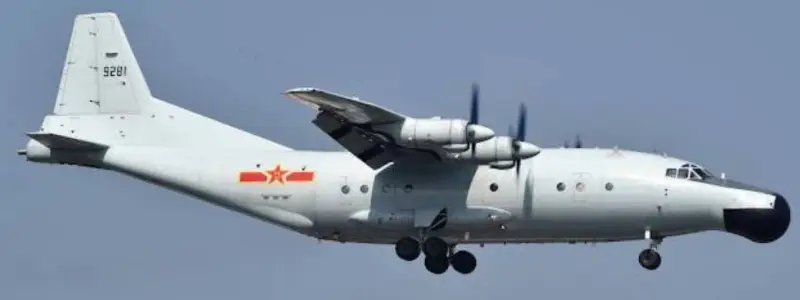
Chinese representatives stated that the Y-8Js are intended to “fight smugglers” and “explore the world’s oceans.”
In addition to the radar, the aircraft was also equipped with aerial cameras, additional bomb and buoy suspension units, as well as larger capacity fuel tanks, which increased the patrol duration to 11 hours. Cruising speed is 470 km/h. Maximum speed – 660 km/h. 3–4 people are employed in servicing the on-board equipment. The total crew size is 7–8 people.
Operation of the first anti-submarine patrol aircraft, the Y-8J, began in 2000. They began to be modernized in 2016. The modified aircraft were repainted in a color that made them difficult to detect against the background of the sea surface.
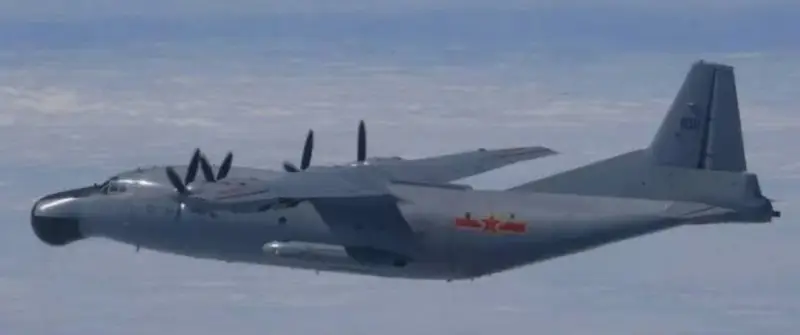
After modernization, information display facilities appeared on board; instead of CRT monitors, color LCD displays were installed. The avionics included modern electronic intelligence stations and new communications equipment.
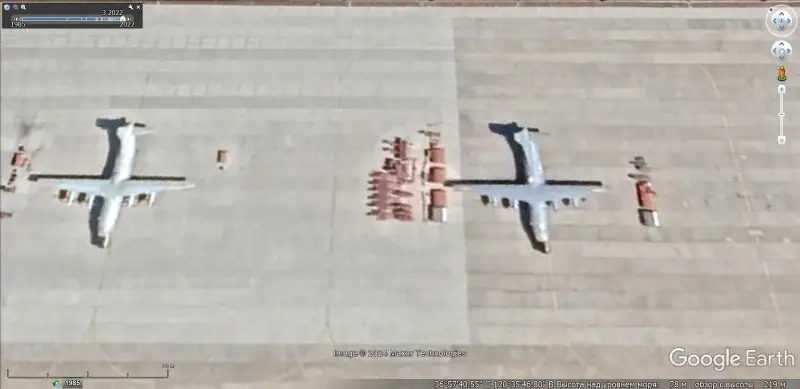
Google Earth satellite image: Y-8J aircraft at Laiyang Air Base
The main airfield for the Y-8X and Y-8J is Laiyang Air Base in Shandong Province. But these long-range reconnaissance aircraft can also be observed at other naval air bases, where they make intermediate landings.
Despite their small numbers, the Y-8X and Y-8J patrol aircraft have long been one of the main instruments of the PLA Navy, designed to control the ocean spaces. In the past, they regularly escorted American AUGs and Japanese ships fleet, and also made provocative flights over the disputed Paracel Islands, the Spratly Islands and the Jongsha Islands.
Until recently, Chinese naval aviation did not have a specialized coastal-based anti-submarine aircraft capable of matching the American P-3C Orion.
In 2015, serial construction of the basic Y-8Q patrol aircraft began (also designated KQ-200).
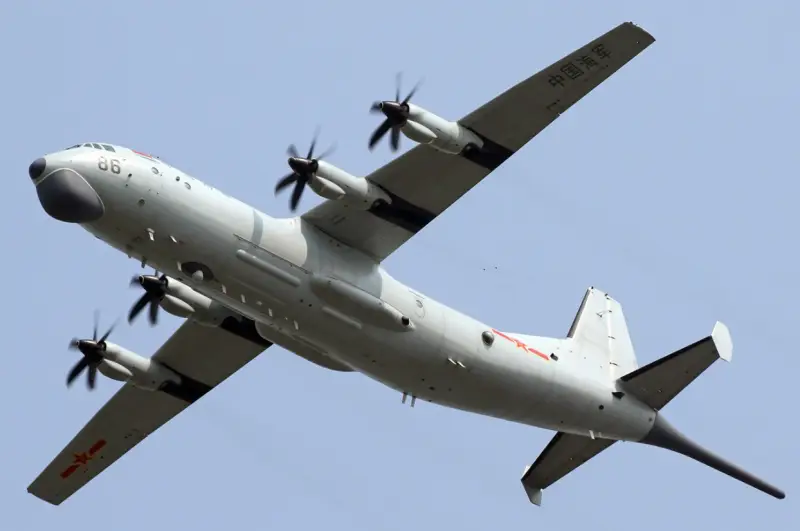
This vehicle, built on the basis of a radically modernized Y-8F-600 (Y-9) transport aircraft, has new economical WJ-6C engines with six-blade propellers. In the tail section there is a magnetic anomaly detector rod designed to search for submarines. On the “chin” there is a fairing of a search optoelectronic system with a thermal imager, a high-resolution camera and a laser rangefinder. The aircraft is equipped with modern electronic warfare, electronic reconnaissance and satellite communications equipment.
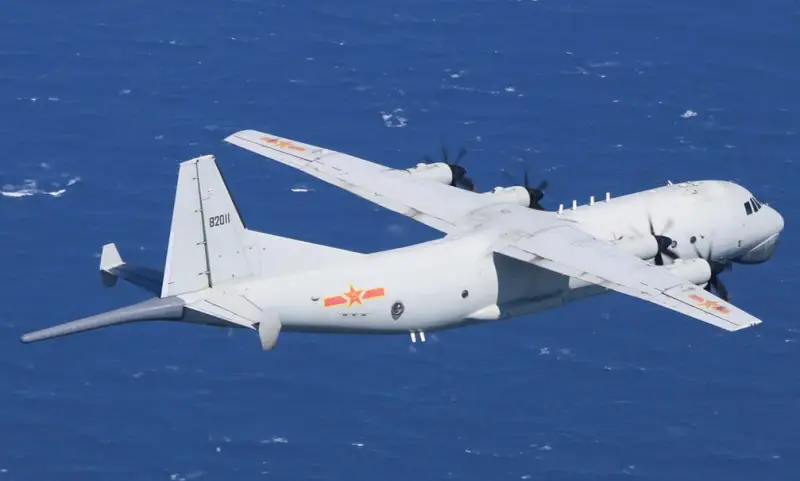
The Y-8Q can carry sonobuoys, anti-submarine torpedoes and YJ-83K anti-ship cruise missiles. Flight range is about 5 km. The service ceiling is 000 m. The patrol time reaches 10 hours. Maximum speed – 400 km/h. Crew – 10 people.
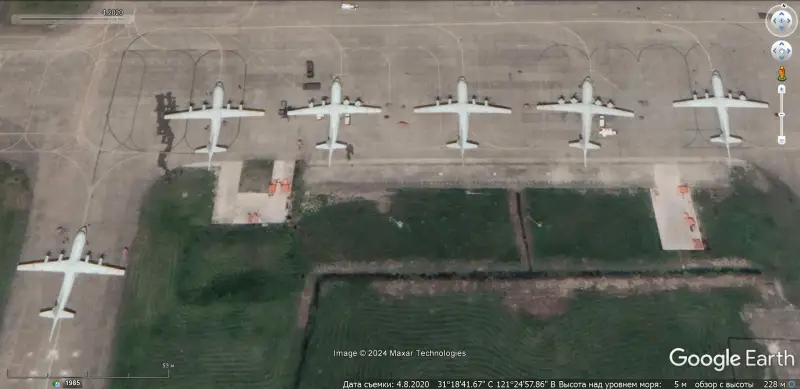
Google Earth satellite image: Y-8Q aircraft at Dutchang airbase
The first anti-submarine Y-8Qs were spotted at Dutchang Air Base in Shanghai. Now they are located at three more airfields.
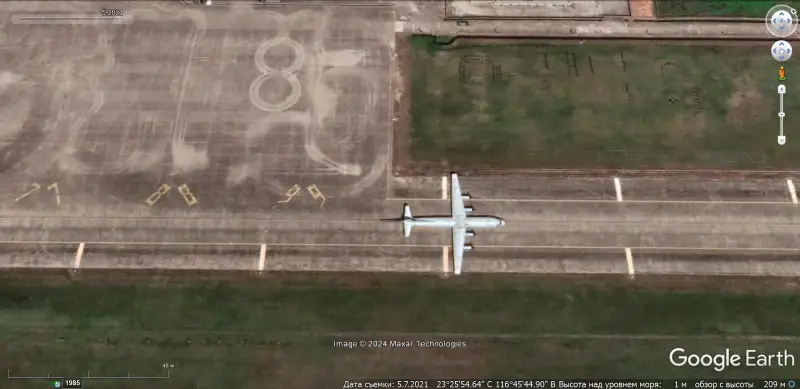
Google Earth satellite image: Y-8Q aircraft on the runway of Shantou airfield
As of today, at least 15 Y-8Q patrol and anti-submarine aircraft serve in Chinese naval aviation.
In 2012, the Y-9JZ electronic reconnaissance aircraft began operation. According to American experts, this aircraft is intended to replace the Y-8J.
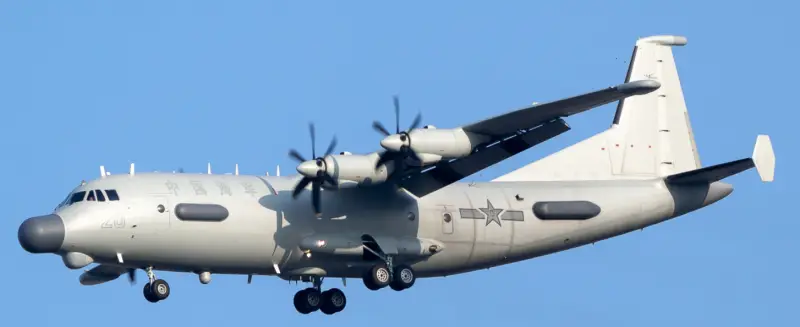
There are eight such aircraft in service, regularly flying near the airspace of Japan and Taiwan. Also, Y-9JZ aircraft were repeatedly spotted over American ships.
The electronic reconnaissance aircraft differs from the original transport-passenger Y-9 by its UAV nose cone and multiple antennas located in small fairings that are installed on the wing flaps, on top of the center section, on the top of the fin and at the bottom of the nose, as well as on the nose itself and the tail fairing. . In terms of basic flight characteristics, the Y-9JZ is close to the anti-submarine Y-8Q. The crew is 6–8 people.
Seaplane SH-5
In the 1950s and 1960s, China received from the USSR two dozen Be-6 seaplanes, which patrolled the long coastline and territorial waters for almost three decades. To extend the service life of the Be-6, the PRC underwent a major overhaul, and on some vehicles the piston engines were replaced with turboprop engines.
To replace the Be-6s that were to be decommissioned in the PRC, the SH-1970 amphibious aircraft was created at the Harbin Aviation Plant design bureau in the late 5s. The official adoption of this vehicle into service occurred in 1986.
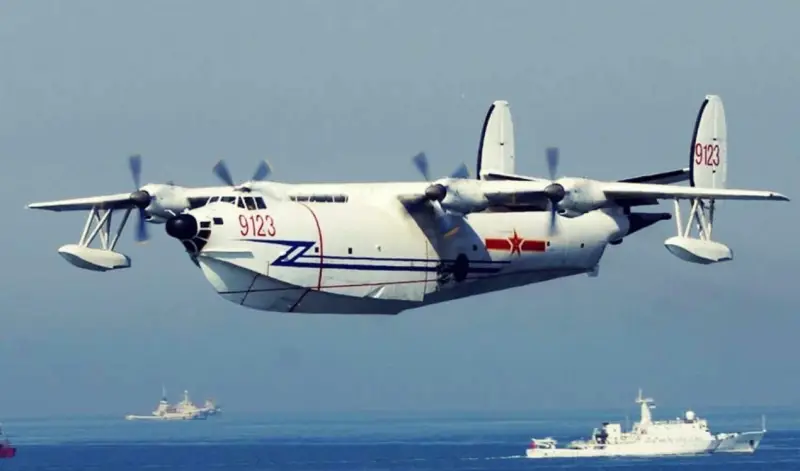
The SH-5 is designed to combat submarines and surface ships, lay sea mines, carry out bombing attacks on coastal targets, transport personnel and cargo, and conduct search and rescue operations. The aircraft can carry free-fall bombs, torpedoes, mines, sonobuoys and drop-drop rescue equipment. The total payload of the multi-purpose seaplane is up to six tons.
In the bow, under the radome, there is a radar antenna from the Type 698. This radar provides detection of a submarine's periscope at a distance of up to 20 km, a boat can be detected at a distance of about 50 km, and the detection range of a large ship is 100 km. To search for submarines, there is a magnetometer rod in the tail section.
The seaplane with a maximum take-off weight of 45 kg is equipped with four WJ-000A turboprop engines (a copy of the AI-5) with a total power of 24 hp. With. Cruising flight speed is 12 km/h. Patrol speed – 600 km/h. Maximum – 450 km/h. Ceiling – 240 km. Practical range – 555 km. Time spent in the air is more than 10 hours. Crew – 4 people.
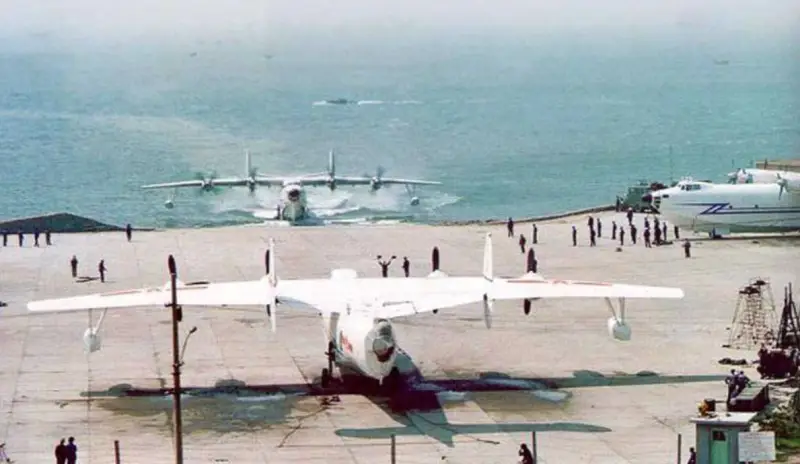
Chinese naval aviation received 7 aircraft, which were located at the seaplane base in Qingdao. Until recently, there were three SH-5s in service.
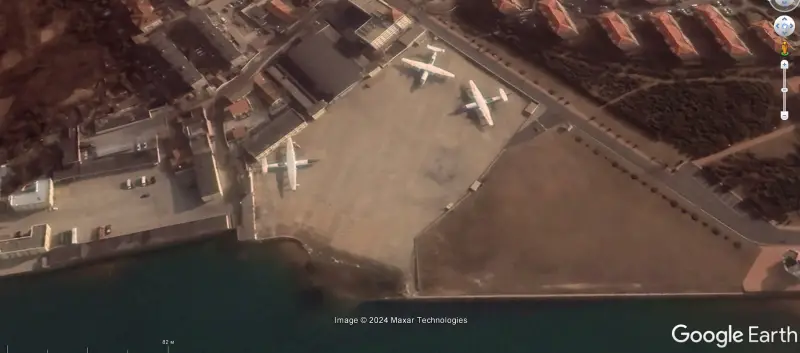
Google Earth satellite image: SH-5 seaplanes at a coastal parking lot in Qingdao
In the 5st century, patrolling and searching for enemy submarines was entrusted to more modern aircraft based at coastal airfields, and seaplanes were planned to be used to search and rescue those in distress at sea. All remaining SH-XNUMXs are planned to be written off in the near future due to exhaustion of their service life.
JZ-8F fast jet reconnaissance aircraft
According to reference data, the PLA Navy has four reconnaissance aircraft JZ-8F (J-8FR).
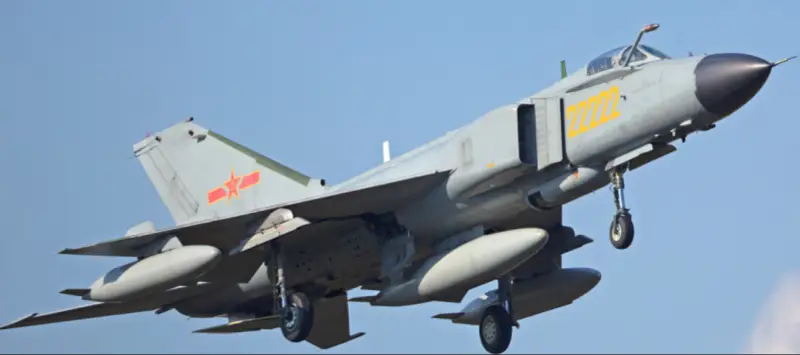
This reconnaissance aircraft, created on the basis of the J-8F interceptor, is very similar in appearance, but is very different in the composition of its on-board equipment and does not carry built-in cannon armament. Small-scale construction of JZ-8F aircraft was carried out until 2012.
On the JZ-8F aircraft, the Type 1492 air target detection radar is replaced by a compartment with photo and television cameras. Instead of the dismantled 23-mm cannon, optoelectronic equipment with a wide field of view, capable of operating in the dark, is installed on board.
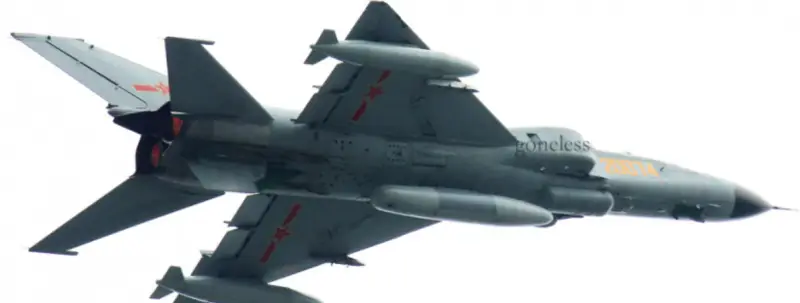
But the most noticeable innovation was the suspension of the container with a side-view radar. The synthetic aperture radar is capable of conducting radar reconnaissance at a range of more than 100 km. The received information in real time can be transmitted digitally to ship or ground points. For this purpose, a secure radio channel is used; at a significant distance from the information consumers, manned aircraft or unmanned vehicles are used for relaying.
Although the basic platform of the J-8F aircraft, which is a Chinese conceptual analogue of the Soviet Su-15 interceptor, is obsolete, this aircraft is still in service and is equipped with fairly modern avionics, weapons and engines. The fighter has a very impressive rate of climb and acceleration characteristics. In afterburner, the J-8F's thrust-to-weight ratio approaches one.
The reconnaissance JZ-8F also has good speed parameters. At high altitudes, its speed can exceed 2 M. With a supply of fuel in the internal tanks, the reconnaissance aircraft’s range of action reaches 900 km. To increase the flight duration, the aircraft can use 600- and 800-liter external fuel tanks, and there is also equipment for in-flight refueling.
The aircraft's armament retained the PL-8 melee missiles. A number of sources indicate that instead of a side-view radar, the X-31R anti-radar missile or its Chinese equivalent YJ-93 can be suspended.
Although the Chinese naval aviation has several types of medium and heavy reconnaissance UAVs, a complete abandonment of the JZ-8F reconnaissance aircraft has not yet occurred, which is apparently due to their ability to reach high flight speeds. Foreign sources write that jet aircraft of this type regularly fly near Taiwan.
Продолжение следует ...
Information